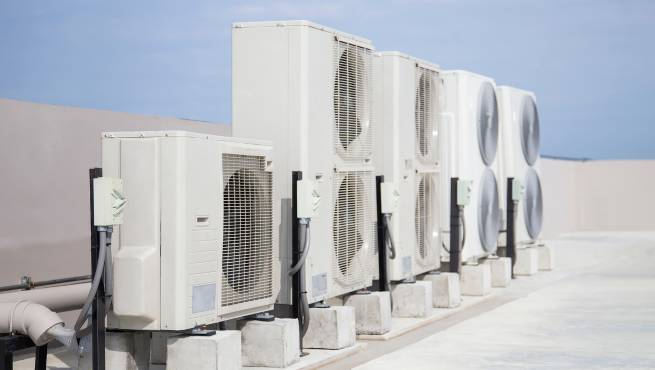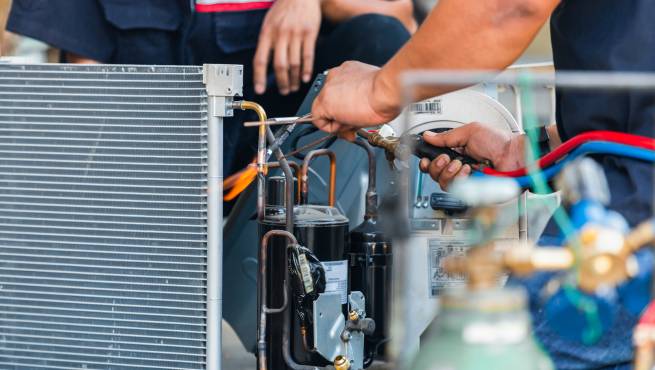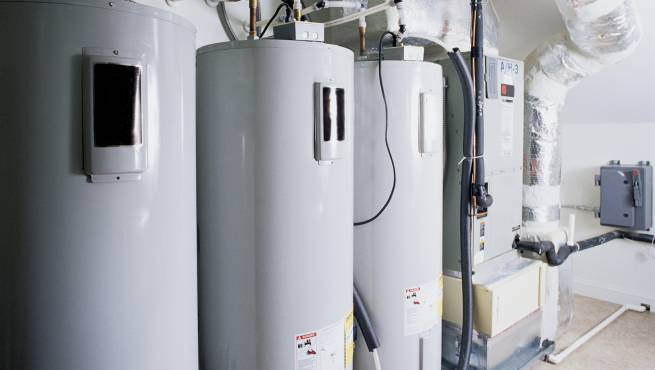A leaking air conditioning (AC) unit is more than just a nuisance—it’s a potential indicator of a malfunction that could lead to expensive repairs or water damage to your home. If you’ve found yourself asking, “why my AC is leaking water,” you’re not alone. Many Boston homeowners face this issue during the warmer months. The key is understanding why it’s happening and addressing the problem before it gets worse.
This article will walk you through the most common causes of AC water leaks, how to troubleshoot the issue, and when to seek professional help on HVAC services in Boston.
Identifying the Most Common Causes of AC Water Leaks
Several factors could cause your AC system to leak water. Below are the most common reasons and how to spot them.
1. Clogged Condensate Drain Line
The condensate drain line is responsible for removing the moisture that your AC pulls from the air. Over time, it can become clogged with dirt, dust, algae, or mold. When this occurs, condensation backs up and spills over, leading to water leaks.
How to identify:
- Puddles of water form around your AC unit.
- A musty smell may come from the drain pan or the line itself.
- Your AC unit might stop cooling effectively.
2. Dirty or Incorrectly Installed Air Filter
A dirty or improperly installed air filter can block airflow to your AC’s evaporator coil. This blockage can cause the coil to freeze. When the system turns off, the ice melts, potentially causing water to overflow from the drain pan.
Ways to recognize:
- You notice ice on your AC’s evaporator coil or surrounding components.
- The air from your AC feels warmer than usual.
3. Frozen Evaporator Coil
The evaporator coil inside your AC cools the air by absorbing heat. However, when there’s inadequate airflow (due to blocked filters, refrigerant leaks, or low refrigerant levels), the coil can freeze. Once the ice melts, it often overwhelms the drain pan, causing leaks.
How to determine:
- Excessively cold air (or a total lack of airflow) from your vents.
- Visible frost or ice build-up on the evaporator coil or refrigerant lines.
4. Improper Installation
An incorrectly installed AC system can easily lead to imbalanced or misaligned components. A unit that tilts in the wrong direction allows water to accumulate in areas where it shouldn’t, trickling out rather than draining properly.
Steps to identify:
- Water leaks occur shortly after installing a new AC system.
- The unit seems uneven or poorly secured.
5. Cracked or Overflowing Drain Pan
The drain pan is located beneath the evaporator coil to catch condensation. Over time, pans may crack or rust, leading to water leakage. If the drain pan overflows, it’s often a sign of a clogged condensate line or excessive moisture due to another issue.
Tips for recognizing
- Water drips consistently from the same location.
- Corrosion or visible damage to the drain pan.
DIY Solutions for Fixing Minor AC Leaks at Home
While some AC leaks require professional intervention, there are a few simple steps homeowners can take to address minor issues on their own.
1. Unclog the Drain Line
If your condensate line is clogged, try unclogging it with a wet/dry vacuum, a long brush, or a mixture of vinegar and water to dissolve the blockage.
Steps to follow:
- Locate the PVC drain pipe near your AC unit.
- Attach a wet/dry vacuum to the pipe’s end and suction any debris.
- Flush the line with a mix of warm water and white vinegar to remove remaining buildup.
2. Replace or Clean the Air Filter
A dirty or improperly installed air filter is an easy fix. Simply replace old filters with high-quality ones and ensure they’re installed correctly. Cleaning reusable filters periodically can also improve airflow.
Tip: Check and change your filters every 1-3 months to maintain optimal performance.
3. Thaw a Frozen Evaporator Coil
If the evaporator coil has frozen over, turn off your AC and wait for the ice to melt naturally. Afterward, ensure airflow isn’t obstructed and the filters are clean. Avoid forcing the ice off, as this can damage the coil.
4. Inspect and Maintain the Drain Pan
Check the drain pan for any cracks or rust. If you detect damage, replace the pan with a new one. If water overflows, ensure the drain line is clear and functioning correctly.
While these DIY methods can solve some problems, ongoing leaks or repeated issues may indicate a more serious problem.
Signs It’s Time to Call a Professional for Your AC Leak
While you can fix minor leaks yourself, certain situations require expert attention to ensure the safety and long-term performance of your AC system.
- Persistent Leaks
If water continues to leak even after cleaning the drain line or addressing the drain pan, it’s a sign of a deeper issue.
- Malfunctioning Components
Frozen evaporator coils, refrigerant leaks, or malfunctioning parts often need diagnosis and repair by trained technicians. Handling refrigerants requires specialized expertise and certifications.
- Improper Installation Issues
If leaks began after new installation, it may be due to incorrect mounting or system alignment. A professional installer can rectify these errors.
- Suspected System Wear and Tear
Older units can develop wear in critical components like the compressor or heat exchange system. Professional technicians can perform inspections, suggest replacements, or repair aging systems.
Why seek professional help:
Prompt intervention prevents expensive repair bills, maintains energy efficiency, and avoids potential water damage to your home.
Keep Your Home Cool and Dry
A leaking AC unit isn’t just inconvenient—it’s a warning sign that your system needs attention. By addressing minor issues like clogged condensate lines or dirty air filters early, you can save yourself time and money down the line. However, if problems persist, don’t hesitate to seek professional help to ensure your AC works efficiently and safely.
At JCShuman, our experienced technicians are just a call away. Whether it’s fixing a stubborn leak or offering preventative maintenance, we’ve got you covered. Contact us today to schedule a service visit and keep your system in top shape through every season.




